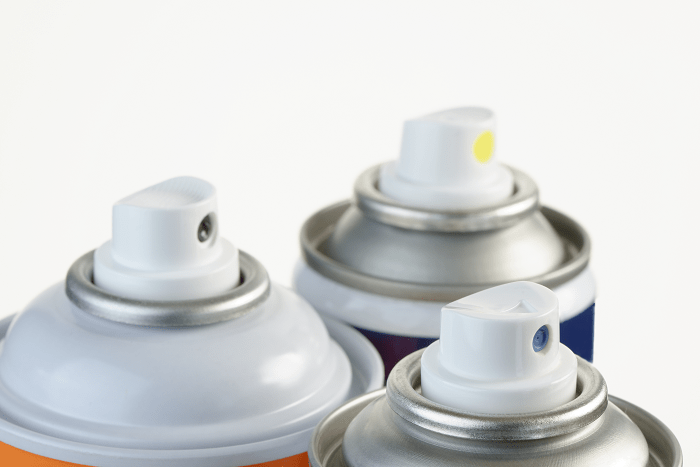HCFC 141b is still available! If you were using Honeywell's Genesolv 2000 or 2004 and are not able to source HCFC 141b, please call 800 886-8240 or email info@ecolink.com. HCFC 141b is SCAQMD compliant and works especially well for cleaning non-oxygen system gauges...
Ecolink News

NMP Solvent – Acetone Replacement for Fiberglass Tools and Spray Guns
NMP Solvent - 3 reasons to replace acetone for cleaning fiberglass tools and spray guns Attention all fiberglass boat builders (SIC Code: 3732), and boat repair (SIC Code: 449304) NOW is the time to stop using acetone in the cleaning operation for fiberglassing tools...
Liquid Penetrant and Magnetic Particle Inspection – Available @ Ecolink Inc.
Liquid Penetrant and Magnetic Particle Inspection Discount Code = "April Blog" for 10% + FREE shipping Whether you perform dye penetrant or magnetic particle inspections, need testing equipment or chemical products, Ecolink wants to be your full-line Magnaflux...
Daraclean 212 – Ecolink Featured Product
Ecolink Inc is a long-time distributor of Daraclean Aqueous Cleaners. Daraclean 212 replaced Daraclean 211 and Daraclean 111CDS -- 2 of 18 Daraclean products that were either replaced (renamed) or made obsolete. Call 800 886-8240 or email info@ecolink.com to order...
Daraclean 282 Conforms to BAC 5763
Ecolink Inc is a long-time distributor of Daraclean Aqueous Cleaners. Daraclean 282 replaced MagnSolve 11 and Daraclean 282NF -- 2 of 18 Daraclean products that were either replaced (renamed) or made obsolete. Call 800 886-8240 or email info@ecolink.com to order...
Daraclean, Dye Penetrant Inspection, Magnetic Particle NDT Available from Ecolink Inc.
ECOLINK INC, CAGE CODE 0WU71, is a long-time authorized dealer, distributor for all Magnaflux products including: Magnaflux Spotcheck Penetrant for Nondestructive Testing NDT Magnaflux SKC, Magnaflux SKD S2 and Magnaflux Developer Magnaflux Testing, Die Penetrant...
Daraclean Aqueous Cleaner – Compare to the Competition and Save $
Daraclean Aqueous Cleaners available from Ecolink Inc. Ecolink Inc., CAGE CODE 0WU71, is a long-time supplier of Daraclean Aqueous Cleaners and invite you to compare to the competition and save $. There is NO MINIMUM ORDER SIZE and we guarantee to respond within 24...
Cleaning Solvent Mil Spec Approvals and NSN List by Ecolink Inc
PRODUCT NAME APPLICATION CONFORMANCE NSN & UNIT of ISSUE AERO KLEEN Removes polysulfide sealants, grease, fuel oils, hydraulic fluids, carbon and organic resins Douglas Aircraft Company, CSD #1, Type III Boeing D6-17487 Rev. M 6850-01-442-0527 Pints, 16 per BX...

MIL-PRF-680C Proposed Superseding MIL-PRF-680B
MIL-PRF-680C PROPOSED SUPERSEDING MIL-PRF-680B 26 October 2006 PERFORMANCE SPECIFICATION DEGREASING SOLVENT This specification is approved for use by all Departments and Agencies of the Department of Defense. NOTE:This draft, dated 5 Feb 10, prepared by the U.S. Army...

Testimonial – How to Replace HCFC-141b
Automotive manufacturer faced with a very perplexing situation. How to Replace HCFC-141b from a 24×7 production that was critical to their production and profitability …“We’re in a tough spot. That’s why I think we should lay everything on the table and come up with a Win / Win.”
Search here
Don’t forget to share this post!
Categories
- 3D Printing Chemicals
- Acetone Cleaners
- Acids
- Additive Manufacturing
- Aerosol
- Aerospace Cleaners
- AK225
- Alcohols
- Anti Foaming Agents
- AQMD
- Aqueous Cleaning Agents
- Bulk Chemicals
- CBD
- Chemical Suppliers
- Chemistry of Cleaning
- Citrus Degreasers
- Clean Air Products
- Commodity Chemicals
- Contec Wipes
- Corrosion Inhibitors
- Daraclean
- Degreasing Agents
- Deicers
- Denatured Alcohol Cleaners
- Disruption of Chemicals
- Drying Agents
- Ecolink News
- Electrical Contact Cleaning Solutions
- Ethyl Acetate
- Evaporation Rate
- Extraction
- Flux Removal
- food grade solvents
- Green Chemistry
- Humectants
- Industrial Degreasers
- industrial green cleaning products
- Industrial Hygienist
- Industrial Pollution
- Interns
- IPA
- Lacquer Thinner
- Low VOC
- Lubricants
- MACT Standards
- Medical
- MEK
- Metal Pretreatment Chemicals Manufacturers
- Methanol
- Methyl Acetate
- MIL-PRF-680
- Military Cleaners
- Millipore
- Mineral Spirits
- MSDS
- N-Propyl Bromide
- NMP Solvent
- Non Flammable
- Oil Extraction
- Organic Cleaning Solvent
- OSHA
- Our Team
- Oxygen Scavengers
- Paint Strippers
- Parts Washer
- PCB Cleaning
- Pollution Prevention
- Precision Cleaning
- Recycling
- Resin Removal
- Rust Removal
- Safer Chemicals
- scale and corrosion inhibitors
- Scholarship Contest
- Sodium Hypochlorite
- soft washing
- Solar Panel Cleaning
- Solvent Replacement Strategies
- Solvents
- Surfactants
- Surgical Cleaning
- Sustainable Chemicals Strategy
- TCE
- Tidal Washers Product Blogs
- Toxic Chemicals
- Vapor Degreasing
- VOC
- Volatile Organic Compounds
- Water Treatment Chemicals
- White Oils
- Wind Turbine Maintenance
- Worker Safety


